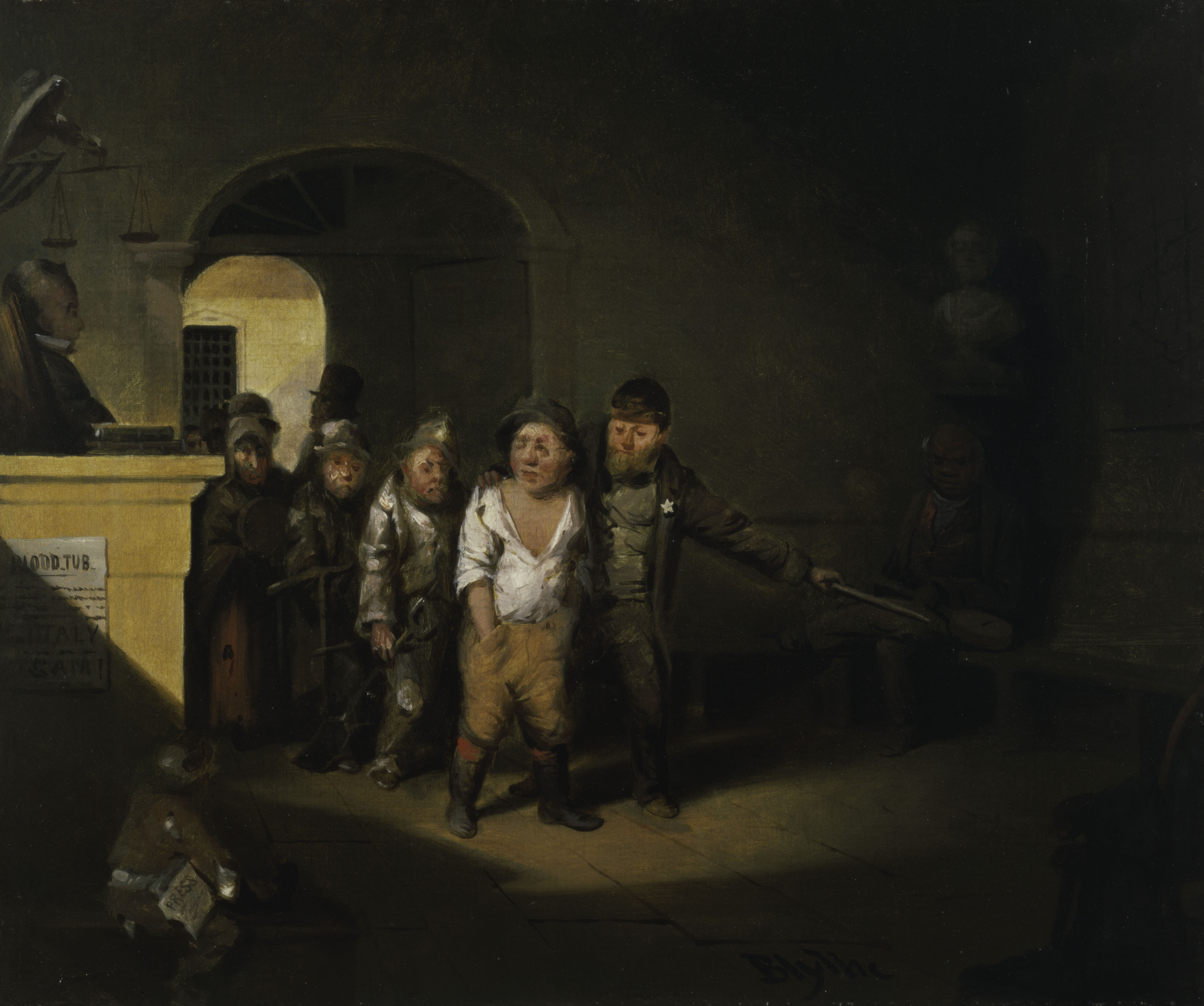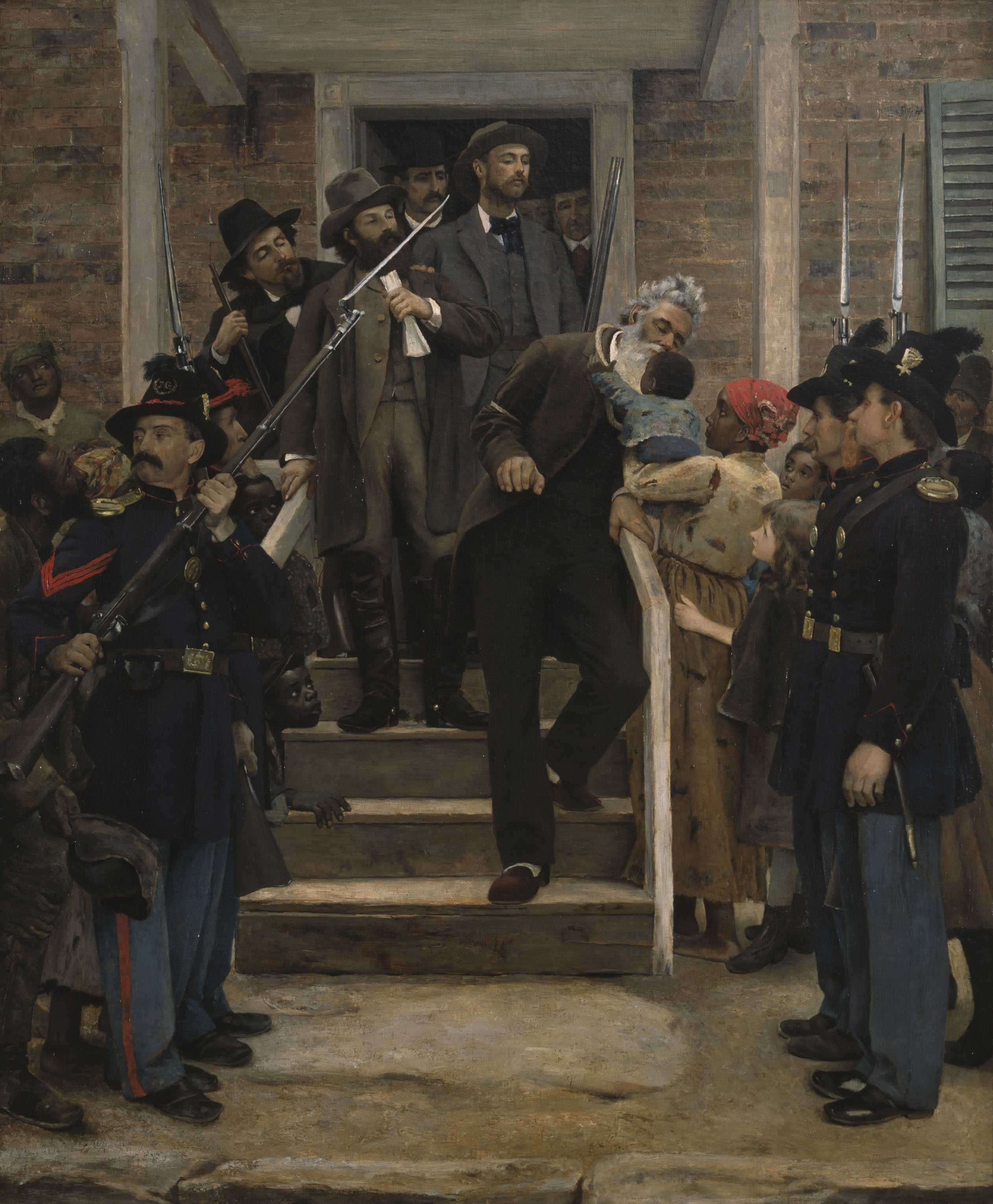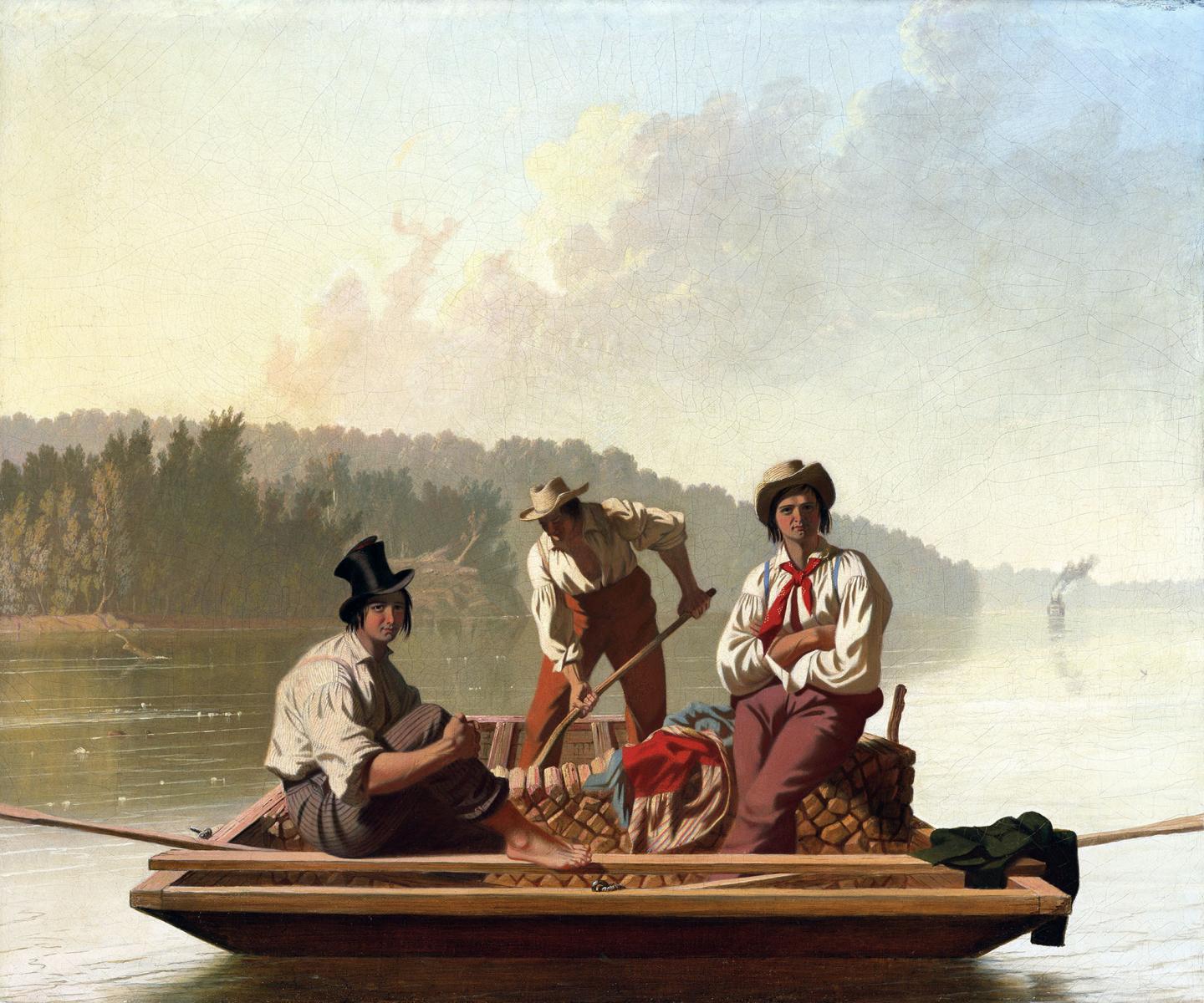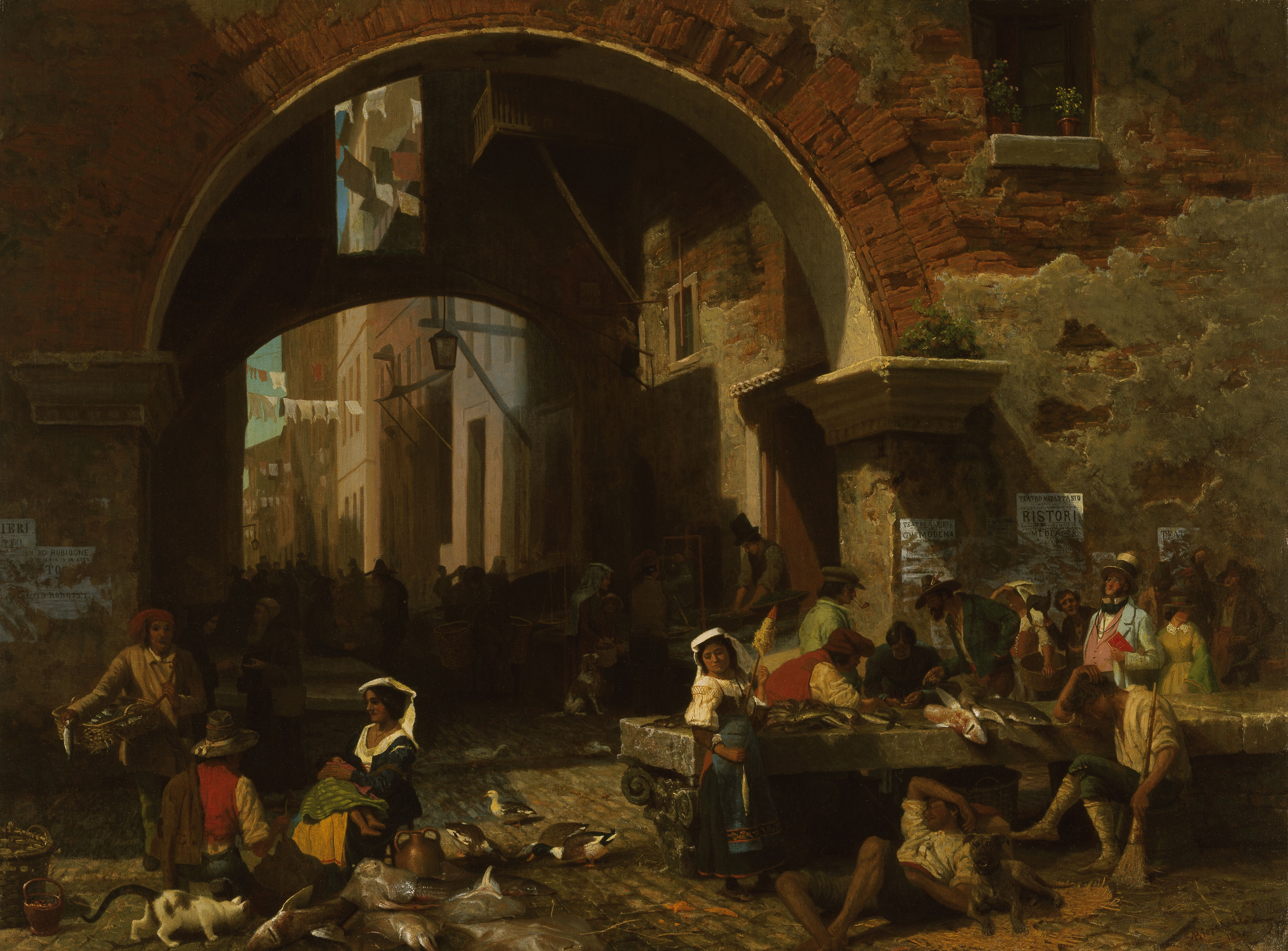Justice

Is our justice system prejudiced?
Here, a policeman leads a group of suspects into a courtroom, where they are directed to join a man seated on a bench. The “Blood Tubs” (mentioned on the poster attached to the judge’s bench) were members of a Baltimore street gang that supported the American Party, which promoted anti-foreign and anti-Catholic prejudice and sought to restrict immigration. Blythe was a sympathizer, and his caricatures of the working poor may reflect the party’s anti-immigration views.



